Rent the Latest Keithley Products
Keithley Product Search
Affiché(s) 1 - 15 de 311 résultats
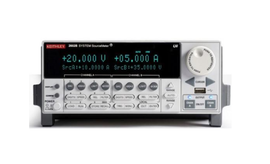
Keithley 2636B
Source Meter; Dual Channel, 10A / 200V / 200W
Location
Unités disponiblesOccasion
Effectuer une demandeNeuf
De
Keithley 2450
SourceMeter Instrument; 200 V, 1 A, 20 W
Location
Unités disponiblesOccasion
Effectuer une demandeNeuf
De
Keithley 2651A
High Power System SourceMeter SMU Instrument; 50A / 40V / 2000W
Location
Unités disponiblesOccasion
Effectuer une demandeNeuf
De
Keithley 2400
SourceMeter SMU Instrument; 200V, 1A, 20W
Location
Unités disponiblesOccasion
Effectuer une demandeNeuf
De
Keithley 2602B
System Sourcemeter; Dual Channel, 40V
Location
Unités disponiblesOccasion
Effectuer une demandeNeuf
De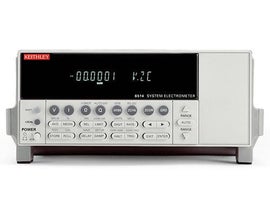
Keithley 6517B
Electrometer/High Resistance Meter
Location
Unités disponiblesOccasion
Effectuer une demandeNeuf
De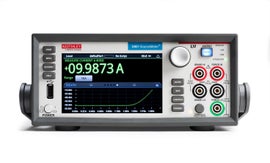
Keithley 2461
SourceMeter Instrument; 100 V, 10 A, 1000 W
Location
Unités disponiblesOccasion
Effectuer une demandeNeuf
De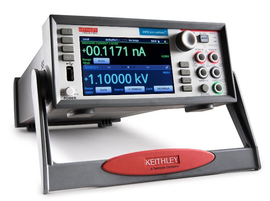
Keithley 2470
SourceMeter SMU Instrument; 1000 V, 1 A, 20 W
Location
Unités disponiblesOccasion
Effectuer une demandeNeuf
De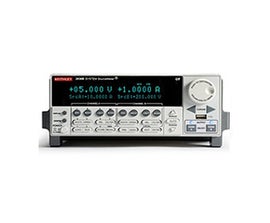
Keithley 2635B
Source Meter; Single Channel, 10A/200V/200W
Location
Unités disponiblesOccasion
Effectuer une demandeNeuf
De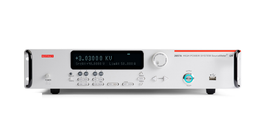
Keithley 2657A
High Power System SourceMeter SMU Instrument; 120mA / 3000V / 180W
Location
Unités disponiblesOccasion
Effectuer une demandeNeuf
De
Keithley 2612B
Source Meter; Dual Channel, 10A/200V/200W
Location
Unités disponiblesOccasion
Effectuer une demandeNeuf
De
Keithley 6221
AC/DC Current Source
Location
Unités disponiblesOccasion
Effectuer une demandeNeuf
De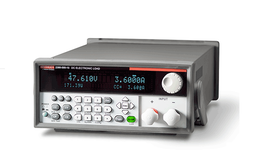
Keithley 2380-120-60
Programmable DC Electronic Load; 120V, 60A, 250W
Location
Unités disponiblesOccasion
Effectuer une demandeNeuf
De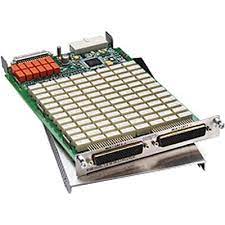
Keithley 3722
Dual 1×48, High Density, Multiplexer Card
Location
Unités disponiblesOccasion
Effectuer une demandeNeuf
De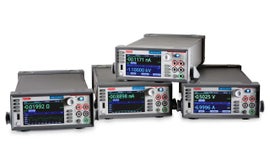
Keithley 2410
SourceMeter SMU Instrument; 1100V, 1A, 20W
Location
Unités disponiblesOccasion
Effectuer une demandeSolutions Financières
Options de financement disponiblesAffiché(s) 1 - 15 de 311 résultats
Powering Innovation with Keithley Rental and Distribution
Innovate on Your Terms with Flexible Rental Programs
Accès immédiat à la dernière technologie Tektronix
Les conseils d’experts des meilleurs dans le domaine
Un soutien complet de la part de partenaires de confiance
Favoriser l'innovation par la collaboration
When the space race took one leap for mankind, Keithley engineers were behind some of the innovations that made exploring the final frontier possible. When the world is waiting for your innovation, Keithley precision and quality can help your product go from prototype to launch in less time.
Frequently Asked Questions
Are SMUs the same as curve tracers?
Curve tracers are similar to oscilloscopes, and they appeared on the market after oscilloscopes. Curve tracers function by varying parameters and then measuring separate ones for data production and analysis. They reference transistors, diodes, and other semiconductor characteristics. Curve tracers are useful for parametric characterization and semiconductor failure analysis. However, they rely on outdated technologies and components that are challenging to maintain. Since SMUs source and measure current and voltage, they share some hardware attributes with curve tracers. Keithley appreciates the usefulness of traditional curve tracers and offers I-V Tracer software to bring several classic features to its SourceMeter SMUs.
What are the Keithley Series 2400 SourceMeter ranges of current and voltage?
Five models exist in the 2400 SourceMeter family of Keithley instruments. The 2400 SourceMeter has a maximum current source/measure range of 1A. That is the same range for the 2401 and 2410 models as well. The maximum voltage source/measure range for the 2400 model is 200V. For the 2401 model, it is 20V. The 2410 model’s maximum voltage source/measure range is 1,100V. There are also the 2420 and 2440 models. The 2420 model has a maximum current source/measure range of 3A, and the range for the 2440 is 5A. For the 2420, the maximum voltage source/measure range is 60V. It is 40V for the 2440.
What is the best Keithley SourceMeter for basic needs?
The 2400 products discussed in the previous answer are ideal for basic needs. You can choose the optimal device for your specific application when you compare the range, measurement resolution, and output power of each. They provide four-quadrant operation, pass/fail readings for quick binning, 1,700 readings per second at 4.5 digits in GPIB, and other useful benefits. There is also a programmable DIO port.
Is a Keithley SourceMeter better than power supplies or DMM and power supply combinations?
A SourceMeter offers several benefits in comparison with power supplies. For example, you do not need to change test leads during operations. When the source crosses zero, SMUs perform automatic sweeps to or from positive and negative outputs. The specified accuracy is quicker to achieve as well. SMUs are more flexible, have a wider range, and offer greater precision. In comparison with DMM and power supply combinations, SourceMeter devices offer tighter integration for source and measure operations.
What is the best Keithley SourceMeter for demanding applications?
The Keithley 2600B system of SourceMeter products can stand up to the most challenging applications. These products feature four-quadrant voltage and current source measurements. With their TSP technology, these Keithley instruments have test programs for high-level throughput embedded. The 2600B products have the widest dynamic range in the industry. Additionally, they feature special technology for multichannel parallel tests that eliminates mainframe needs.
What are the key specifications to consider when choosing a Keithley SourceMeter?
When shopping for any SMU, there are many factors to consider. These are a few key factors:
· Stability: This refers to the long-term or short-term changes of the voltage source from a set point at a certain temperature and during a specific period.
· Accuracy: The accuracy specification is listed as a negative or positive percentage of the settings for each current or voltage range.
· Resolution: This is the source’s smallest potential adjustment step.
· Range: There is a different resolution associated with each range. Graphs are used to specify the minimum and maximum ranges for SMU output.
· Output noise: This is the noise sourced by the SMU’s source unit, and it is specified across frequency bands. Output noise is specified for each of the current and voltage source ranges.
· Output resistance: The sub-ranges usually have an output resistance specification. It covers the source’s internal resistance, a current source’s parallel resistor, and a voltage source’s series resistor.
Input voltage, response time, and source guard are some secondary factors to consider when you buy or rent Keithley instruments. If you need assistance choosing the right SourceMeter for your needs, Electro Rent can help. With Electro Rent’s convenient rental design, you can quickly receive the instruments you need with no lead time or up-front costs.
Need Help Problem-Solving?
Our expert team are here to help guide you to the right product solutions. Talk to the team today.



